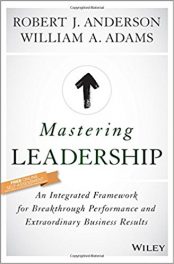 Editors: George S. McClellan, Jeremy Stringer and Associates
Editors: George S. McClellan, Jeremy Stringer and Associates
Publisher: Jossey-Bass, an Imprint of Wiley – Higher Education, 671 pages
Book Review by: Paiso Jamakar
Student affairs administrators in universities and colleges are in charge of areas of student life such as assessment and retention, career development, counseling, enrolment management, ethnic and racial minority support, housing, orientation, student activities, and student unions.
Some 11,000 student administrators at around 1,400 campuses in 29 countries are members of the National Association of Student Personnel Administrators or NASPA with its headquarters located in Washington DC. Among the organization’s members are also faculty, graduate and undergraduate students.
NASPA members enhance students’ lives by ensuring that these important values (and others) are upheld at all times: access, collaboration, diversity, fellowship, integrity, learning, service and the spirit of inquiry.
This is an authoritative reference guide for practitioners of student affairs administration. Besides the editors, some 50 experts in various subjects within the profession contributed articles for this book.
The third edition of this book covers numerous areas of student administration in its six parts and related topics in 31 chapters, but the main ones are the following:
- Contexts of professional practice
- Frameworks of professional practice
- Students: the reason for our professional practice
- Human resources in professional practice
- Interpersonal dynamics in professional practice
- Skills and competencies in professional practice, and
- Epilogue: continuing the conversation
Study aids in the form of figures and tables are provided for the student and general reader to better absorb the material. The content in the chapters are very well organized by the editors. The keyword in the topic covered in each chapter is first defined or explained, and at the end of each chapter a conclusion is provided, followed by a list of references that readers can use for further inquiry.
For example in Part One – Contexts of Professional Practice – the first chapter, entitled From the People Up: A Brief History of Student Affairs Administration, the author James J. Rhatigan starts out in the heading Beginnings by pointing to the earliest writings on student affairs dating back to educational institutions in ancient Athens, then to courses taught on the subject in the Middle Ages and so on, evolving to the present.
Who were the people who took charge of matters relating directly to students, as we enumerated in the first paragraph? And what were their titles? There were: deans of men, deans of women, deans of students, and personnel workers.
Rhatigan traces the history of the student affairs profession to the modern era, describing the predominant characteristics of the interim decades. For example, the 1960s and 1970s were decades characterized by student activism, frequent violence, and the illicit use of drugs such as marijuana. That era also bore witness to the assassinations of John F. Kennedy, Robert F. Kennedy and Martin Luther King Jr.
In the subsequent decades – the 1980s and 1990s – Rhatigan points out that interest in student affairs grew immensely and there was substantial growth of organizations relating professionals charged with the task of helping students in non-academic aspects of their college life.
These topics are followed by a Conclusion in the chapter that recaps the material covered within, raising some questions and providing answers. Finally, the chapter ends with a list of books, articles, etc. used by the author as well as other potential sources of information available for further reference and reading.
This book provides the right framework within which students affairs administrators (and those entering the profession) can work for success in ensuring that college students’ needs are met and that they lead a harmonious and happy life on campus. We congratulate the editors – George S. McClellan and Jeremy Stringer – and all the numerous authors of the book’s chapters, for having done a great and envious job.






